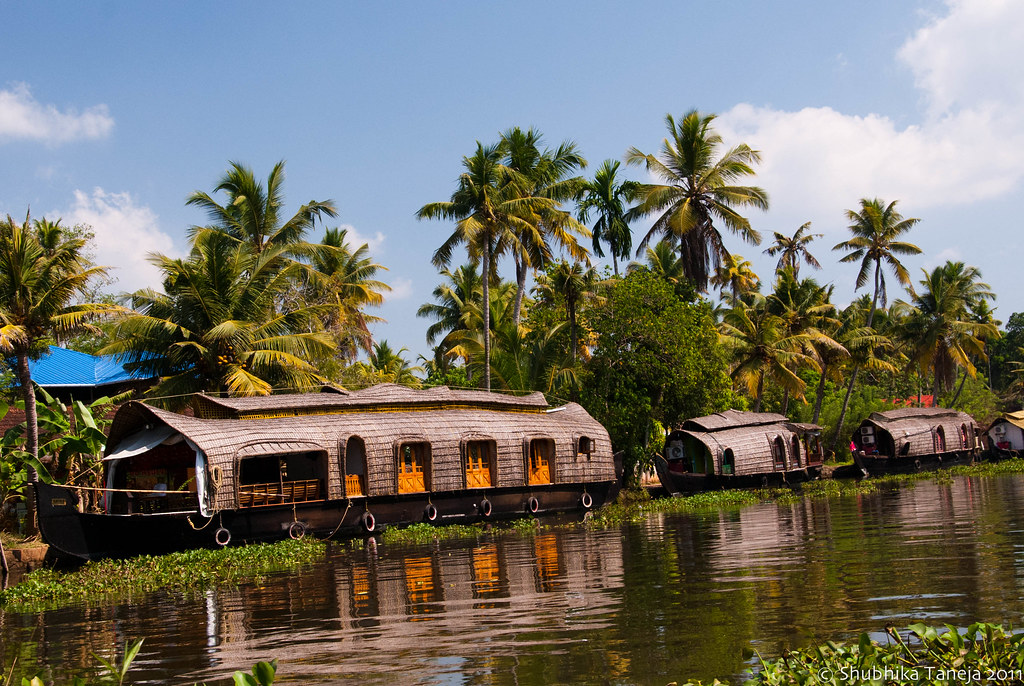
The southern spice trail of India offers aromatic plants and scents – temples, history, fragrant curries, plenty of cows and the odd elephant. Bev Malzard explores. ‘India is a land of contrasts.’ These are the words I read when I first heard about India in primary school.
I missed the hippie trail through India in the late 70s and somehow it missed my ‘trip list’ for the next 30 years. It’s a long time since the 70s and I am no longer young and fearless – I don’t have the time to meander on a spiritual journey, nor can I laze around a beach for weeks. Playing it safe, but not too safe, I opted for a guided tour through the southern part of India, with companions from the UK – all aged from late 50s to 70s. These were tough, hardened travellers, who had been everywhere and adapted to India as soon as the first cow strolled in front of our coach and nearly sent us off the road.
My kind of people.
We were on the Cosmos Tours Kerala & Spice Route trip. This extraordinary trip has left me with a montage of memories, all compartmentalised as it wasn’t a seamless 15 days; there were stops, starts and surprises along the way. For two days we drove through small towns and villages that were so crowded that I wondered how the human spirit could breathe, then open, brilliant green paddy fields appeared with workers dotted on the shivery landscape; a multi-storied steel and glass building branded with the IT neon success story flashed itself on the side of a highway, and beside it stood broken houses, businesses of broken dreams and rubbish piled high against the near and present future of India.
Following are my memory chip postcards of India, and if my brain doesn’t go into the daily details of life here – all I see is colour. Temples, temples, temples The southern spice trail in India offers more than aromatic plants and scents – temples, history, fragrant curries, cows and more cows plus the odd elephant village.
It is the site of the first British settlement in 1639. There are buildings here that smack of the British Raj; Portuguese churches; and more Hindu temples than you can poke an incense stick at. Temples and precious sites visited, with the amazing ancient carvings and script include: Mahabalipuram, UNESCO World Heritage site showcasing some of India’s finest rock art and architecture. See the Five Rathas, Sarjuna’s Penance and Shore temple; Kanchipuram, one of the 11 sacred sites of India; the Dakshinachitra heritage centre; the 16th century Church of Our Lady of Expectations; the basilica of San Thome and the gardens of the Theosophical Society, a vast campus of rambling pathways and countless trees. After a long day’s drive on highways to hell with roadside rubbish gobbling up all strips of nature and seeing crumbling half-finished buildings, we arrived in the immaculate seaside town of Pondicherry.
Two thousand years ago the Romans traded on the shores; the Portuguese arrived in 1521 and by the 17th century the French had purchased the town, only relinquishing it in 1954. I wandered along one of the avenues with shade trees and neat houses, only to watch an elephant and its mahout cross the street in front of me – another day in the life of! Ooty _mountain _india As we made our way up to the Cardamom Hills we could see the exquisite beauty of the mountains and enjoy fragrant, clear air, redolent with the scents of spices and sweet breezes.
A walk into the small town of Thekkady included lots of stops to look at boutiques selling saris, good fashion items, jewellery and some well-made souvenirs. From the foot of the beautiful Nilgiri Hills we began the steep and winding road looking down over the rolling plantations of tea. The entire town of Ooty was built by the British, and there’s a good legacy of guesthouses and hotels for the 21st century visitor.
For fun take a ride on the Ooty ‘toy train’. This little wooden train runs most days but is subject to weather, elephants on the track, the odd landslide and rain. You choof through green hills to Coonoor, the old ‘summer capital’ of Madras. At 2,240 m above sea level, the air is clean, the monkeys are plentiful and the jacaranda trees and colourful lantana a sight for shining eyes.
And for something completely different hop onboard a houseboat to ply the backwaters – Cochin in Kerala (top). The houseboats took about eight people and we each separated to our own vessels. We were served fine curries particular to this region with fresh fruit following. A heavy sleep and back on shore saw most people a little sad at leaving the houseboats. And it’s like that leaving India. I was a little sad, as I didn’t think I had understood it well enough – I didn’t have enough time.
But hey, as the distance between us grows, my memories are growing fonder and I’m getting a bit more of a handle on things – but maybe I’m not. It doesn’t matter really. India goes from the sublime to the incredulous – and long may it stay that way. Remember, India is not for the fainthearted, best to be under the guidance of a reliable company.
photo: Shubhika Taneja
Comments
Thanks for adding the image - I had a problem uploading mine - cheers!